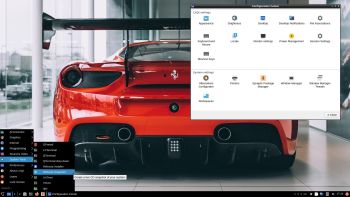ExTiX LXQt Mini with LXQt 0.14.1, Refracta Snapshot and kernel 5.6.2-exton :: Build 200402



I‘ve made a new “mini” version of ExTiX – The Ultimate Linux System. It is based on (upcoming) Ubuntu 20.04 LTS Focal Fossa. The ISO file is now of 1050 MB, which is good if you want to run the system super fast from RAM. When the boot process is ready you can eject the DVD or USB stick. Use Boot alternative 2 or Advanced options… >> load to RAM. The best thing with ExTiX 20.4 is that while running the system live (from DVD/USB) or from hard drive you can use Refracta Snapshot (pre-installed) to create your own live installable Ubuntu 20.04 system. So easy that a ten year child can do it! ExTiX 20.4 uses the latest kernel – 5.6.2. Released by Kernel.org today.
Study all pre-installed packages in ExTiX 20.4.
-

- Login or register to post comments
 Printer-friendly version
Printer-friendly version- 4894 reads
 PDF version
PDF version
More in Tux Machines
- Highlights
- Front Page
- Latest Headlines
- Archive
- Recent comments
- All-Time Popular Stories
- Hot Topics
- New Members
digiKam 7.7.0 is released
After three months of active maintenance and another bug triage, the digiKam team is proud to present version 7.7.0 of its open source digital photo manager. See below the list of most important features coming with this release.
|
Dilution and Misuse of the "Linux" Brand
|
Samsung, Red Hat to Work on Linux Drivers for Future Tech
The metaverse is expected to uproot system design as we know it, and Samsung is one of many hardware vendors re-imagining data center infrastructure in preparation for a parallel 3D world.
Samsung is working on new memory technologies that provide faster bandwidth inside hardware for data to travel between CPUs, storage and other computing resources. The company also announced it was partnering with Red Hat to ensure these technologies have Linux compatibility.
|
today's howtos
|









.svg_.png)
 Content (where original) is available under CC-BY-SA, copyrighted by original author/s.
Content (where original) is available under CC-BY-SA, copyrighted by original author/s.

ExTiX “The Ultimate Linux System” Gets a Mini Version
ExTiX “The Ultimate Linux System” Gets a Mini Version Based on Ubuntu 20.04 LTS and Linux 5.6
ExTix 20.4 ‘Mini’ Linux Distro Released: Based On Ubuntu 20.04
ExTix 20.4 ‘Mini’ Linux Distro Released: Based On Ubuntu 20.04 LTS
ExTiX LXQt ‘Mini’, featuring Linux 5.6.2 released
ExTiX LXQt ‘Mini’, featuring Linux 5.6.2 released